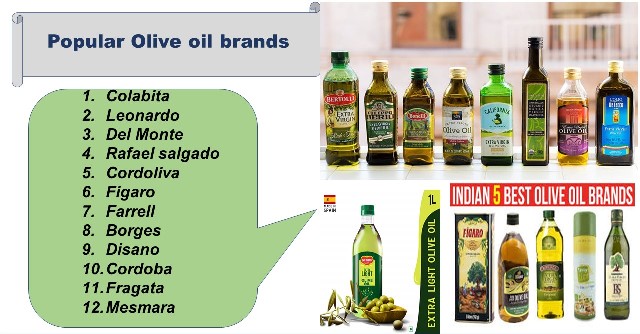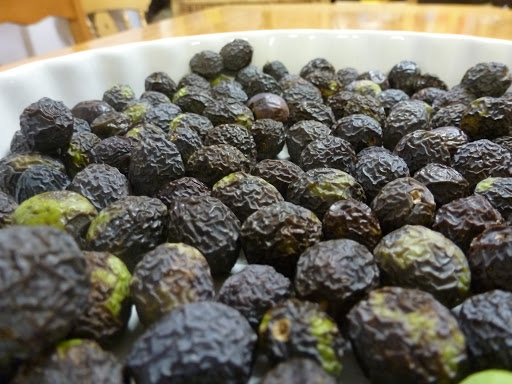Olives & Olive Oil
Olives are small fruits that grow on olive trees. They belong to a group of fruit called drupes, or stone fruits, and are related to mangoes, cherries, peaches, almonds, and pistachios. The olive tree ranges in height from 3 to 12 metres (10 to 40 feet) or more.
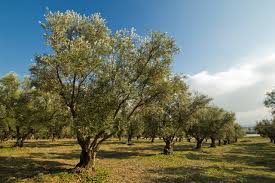 | 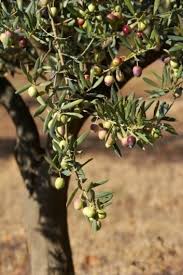 | 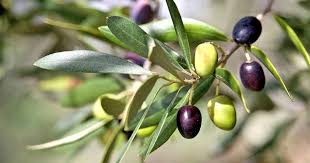 |
The olive fruit is classed botanically as a drupe, similar to the peach or plum. Within the stone are one or two seeds. Olives tend to have maximum oil content (about 20–30 percent of fresh weight) and greatest weight six to eight months after the blossoms appear. At that stage they are black and will continue to cling to the tree for several weeks.
Cultivation of Olives
Commercial olive production generally occurs in two belts around the world, between 30° and 45° N latitude and between 30° and 45° S, where the climatic requirements for growth and fruitfulness can be found. As olives are the Mediterranean in origin, most varieties come from Spain, Italy, Greece, and France. In the Mediterranean region, 90% of olives are used to make olive oil
In California, olives such as the Mission variety are grown almost exclusively for table use. In Europe, olives such as the Picual, Nevadillo, and Morcal are grown mostly for oil. Fresh, unprocessed olives are inedible because of their extreme bitterness resulting from a glucoside that can be neutralized by treatments with a dilute alkali such as lye. Salt applications also dispel some of the bitterness. The processed fruit may be eaten either ripe or green. Fruits for oil extraction are allowed to mature, but, for processing as food, immature fruits are picked or shaken off the tree.
What is the Difference Between Green and Black Olives?
Again, there is a prevalent myth that black and green olives are separate entities which grow on different trees. However, they are the exact same olive. The only difference here is the maturity of the fruit; at an early stage of maturity, the olives are green and not yet ripe. However, as the ripening process progresses, olives become darker and darker until they reach their ‘black’ stage.
| Raw green olive | Mature olive | Ripe olive (Black olive) |
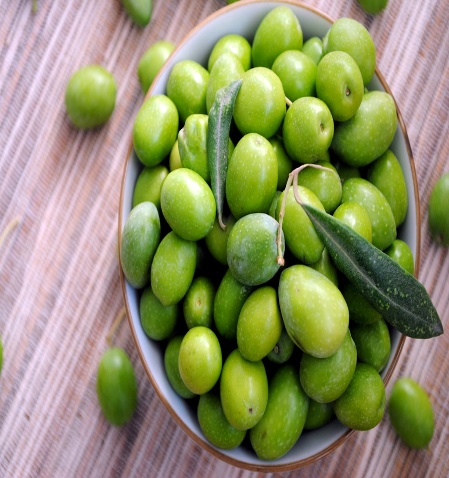 | 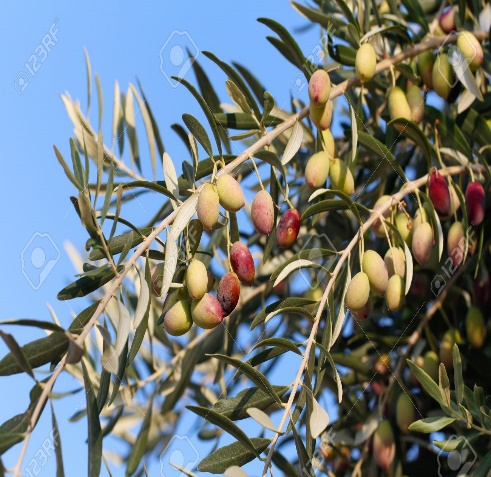 | 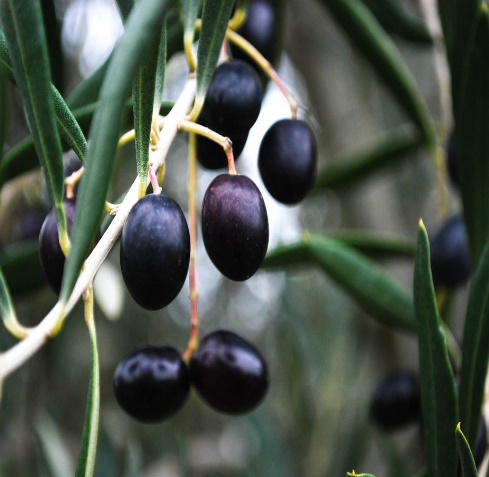 |
only difference between green olives and black olives is ripeness; unripe olives are green, whereas fully ripe olives are black.
Because the raw green olives have a naturally bitter taste, they need to be cured; this can be done through various methods including oil-curing, water-curing, brining, dry-curing, or placing in a lye solution.
Green vs. Black Olives
In addition to the difference in their state of ripeness, there are other distinguishing characteristics when it comes to packaged green and black olives. Bottled green olives are usually pitted, and often stuffed with various fillings, including pimentos, almonds, anchovies, jalapenos, onions, or capers. Canned black olives are graded into sizes labeled as small (3.2 to 3.3 grams each), medium, large, extra-large, jumbo, colossal, and super colossal (14.2 to 16.2 grams). Black olives also contain more oil than green olives.
How Are Olives Processed
Freshly picked olives are incredibly bitter thanks to their high oleuropein content. Oleuropein is a potent polyphenol that occurs naturally in olives and makes the fruit virtually inedible. To make the olives somewhat palatable, we need to dim the bitterness of the oleuropein through a curing process.
There are four typical curing processes;
| Brine Curing Method: – Fully ripened, dark purple or black olives are gradually fermented in brine (Saltwater). This curing method is quite standard, and it’s straightforward. The olives are put in sealable jars and covered in a saltwater solution (brine). It is essential that the brine completely covers the olives, and once this is the case, the jar lid is sealed. Over time, as the saltwater breaks down the bitter compounds in the olive, they become milder tasting. This takes major time—up to a year. Brine-cured olives are often sweet and full of depth, since the brine acts to intensify the fruit’s natural flavors. | 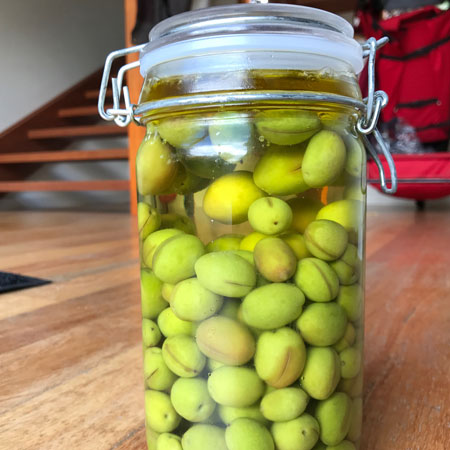
|
| Dry Curing Method: – These olives get packed in salt for a month or longer. The salt pulls the moisture and bitterness from the olives. The salt is then removed, and sometimes the olives get bathed in olive oil to keep them juicy and plump. Producers use the dry curing method for specific varieties of black olives. While the curing process can sometimes be over in a month, it often takes several months and depends on the size and shape of the olives. When the olives are fully cured, they are transferred into glass jars and mixed with salt and/or oil. Dry-cured olives have a deeply concentrated flavor, and a wrinkly, prune-like appearance. Oil-cured olives are dry-cured olives that get macerated, or softened, in oil for several months. | 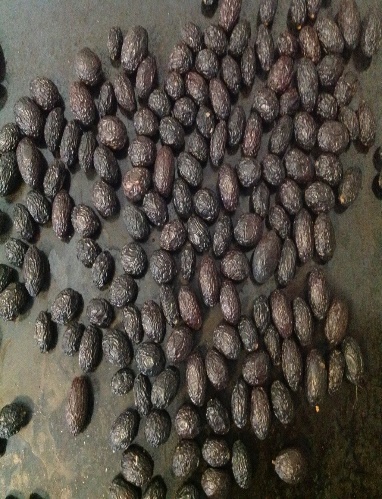
|
| Lye Curing Method: – Large commercial olive producers make use of this time- and cost-effective method. This process involves using an alkaline solution called lye (Caustic soda). On the positive side, this curing method only takes about seven days, but it also has a negative point; it sometimes leaves a slight chemical aftertaste. Manzanilla is a Spanish green olive that is lightly lye-cured then packed in salt and lactic acid brine | 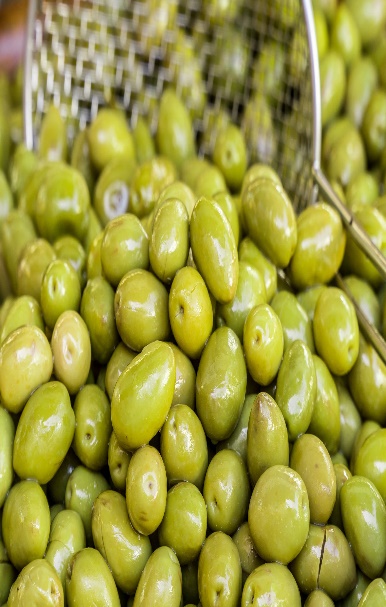 |
| Water Curing Method: – This curing method involves soaking fully- submerged olives in water over an extended period. Soaking, rinsing in plain water, and repeating, and repeating again. However, it is quite time-consuming, so it’s an unusual choice for commercial production. The concentration of oleuropein slowly declines during this process. Once the olives are of an acceptable taste, producers transfer them into a brine for preservation. | 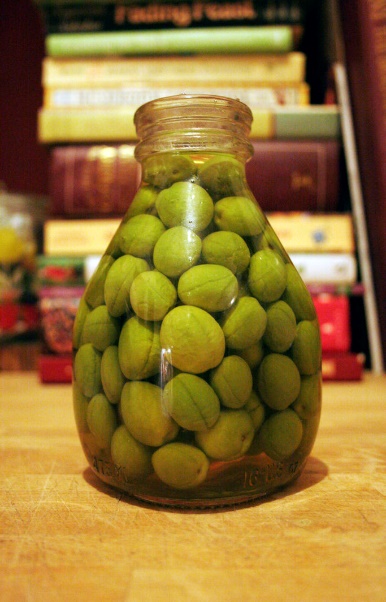 |
What Are the Best Types of Olives?
Green Olive & Black Olive Variety
| Alfonso olives are a visually appealing olive with a thick and intense purple color. The Alfonso originates in Chile, and producers typically brine cure it in a combination of red wine and vinegar, giving it a sharp, tangy taste. | 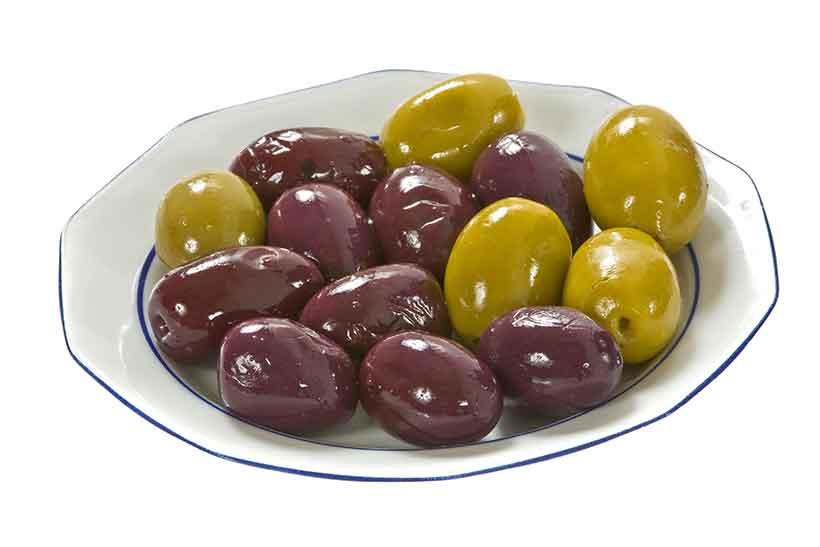 |
| Castelvetrano olives -come from Sicily in Italy. They are renown for being one of the best-tasting olives in the world, and their appearance is a striking bright green color. Their light and mild taste make them ideal for a wine and cheese platter. | 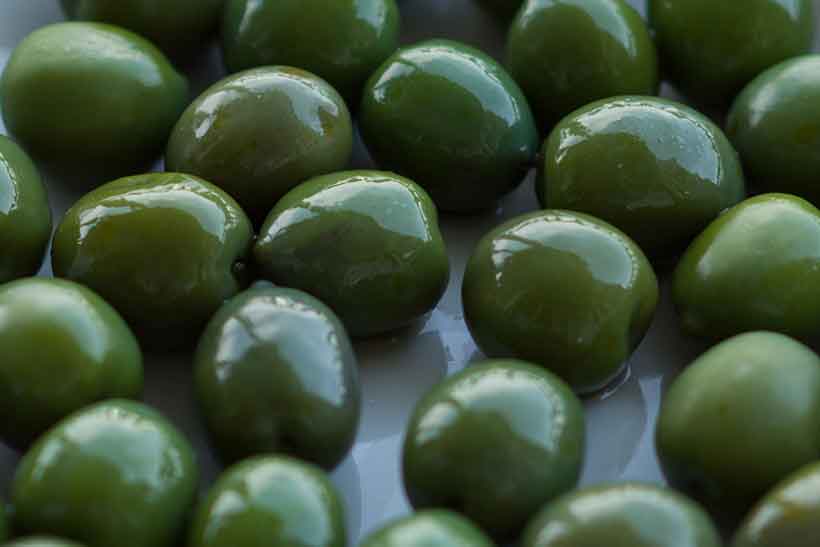 |
| Cerignola olives-These are the largest olives in the world and originate in the Puglia region of Italy. Due to their size, we can often find them stuffed with various ingredients or used to make oil. Cerignola olives are available in black and green form. | 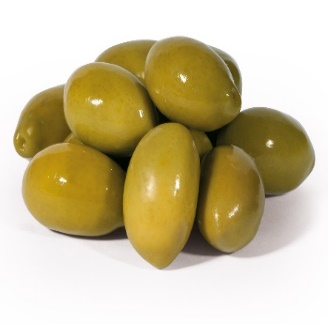 |
| Gordal Olive– referred to as “jumbo olives,” they are the largest type of olive grown in Spain. These Spanish olives are generally sold pitted |  |
| Kalamata olive– is one of the most famous varieties in the world. An attractive deep reddish-purple, they grow close to the Ionian Sea in the Kalamata region of Southern Greece. Kalamata olives are reasonably large, and as they contain moderate amounts of oil. These intensely briny Greek olives are one of the most popular | 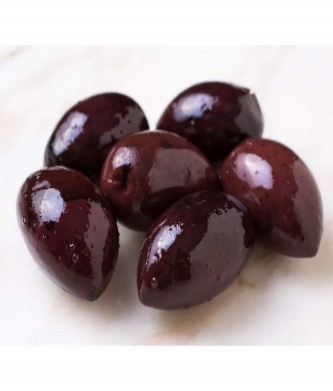 |
| Manzanilla Olive– is one of the most famous types of olives in the world. Typically, these Spanish olives are pitted, stuffed with pimento, and then packed in brine. Originating from Sevilla, a city in the southern region of Andalusia, Spain, | 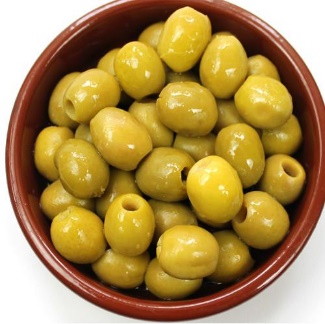 |
| Nicoise Olive-is a French olive are cured in brine and packed alongside various herbs and oil. They have a slightly sweet, smoky, and bitter—but tasty—flavor, so they work best as a table olive. | 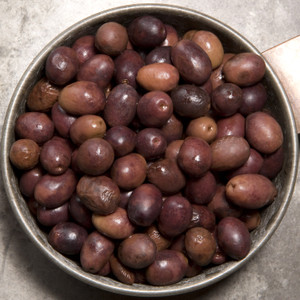 |
Nutrition in Olive: –
- Calories:– 115–145 calories per 3.5 ounces (100 grams),
- Fat:-Olives contain 11–15% fat, 74% percent of which is oleic acid, a type of monounsaturated fatty acid. It is the main component of olive oil.
- Carbohydrates: – 5.3 gms
- Fibre– 3.3 gms
- Protein-01 gms
- Minerals– Sodium, Magnesium, Calcium & Iron
- Vitamin– Vitamin A & E
Health benefits of olives
- Antioxidant properties:-Olives are rich in antioxidants, with health benefits ranging from fighting inflammation to reducing microorganism growth.
- Improved heart health:-High blood cholesterol and blood pressure are both risk factors for heart disease. Oleic acid, the main fatty acid in olives, is associated with improved heart health. It may regulate cholesterol levels and protect LDL (bad) cholesterol from oxidation.
Cancer prevention-Olives and olive oil are commonly consumed in the Mediterranean region, where rates of cancer and other chronic diseases are lower than in other Western countries Thus, it’s possible that olives may help reduce your risk of cancer.
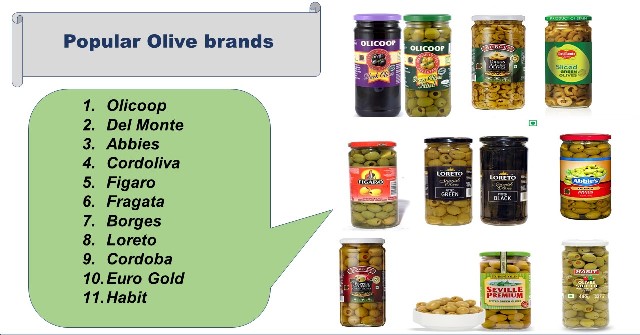
OLIVE OIL

Olive oil is made by pressing fresh olives to extract the oil. It’s a popular cooking oil that is produced in olive-growing regions, most often France, Italy, Spain, Greece, and California. Its flavor is highly prized and used often in Mediterranean and European cuisines. Considered one of the healthier fats, it has also found a place in kitchens around the world, appearing in cold applications like salad dressing and pasta and used for frying, sautéing, and baking.
Types of Olive Oil
Olive oil comes in various grades and the quality differences within each can be significant. The best olive oil is a blend of oil from a mixture of red-ripe (not green and not fully ripe) olives and a smaller proportion of oil from green olives of a different variety. Cold-pressing—a chemical-free process using only pressure—produces a higher quality of olive oil with a richer flavor and lower acidity. The level of acidity—free oleic acid—is used to grade olive oil.
| Extra Virgin Olive Oil: This is a cold-pressed, unrefined oil from the first pressing of olives. With only 1 percent acid, it’s considered the finest and fruitiest and is the most expensive. It ranges from a crystalline champagne color to greenish-golden to bright green. Generally, the deeper the color, the more intense the olive flavor. |  |
| Virgin Olive Oil: Virgin Olive Oil also comes from the first pressing and must have an acidity level of less than 2% therefore it is of inferior quality to Extra Virgin Olive Oil. It’s flavour intensity can vary and its taste is milder than Extra Virgin Olive Oil. | 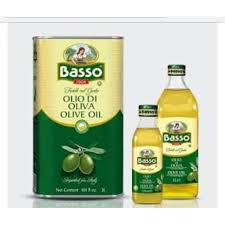 |
| Pomace olive Oil-The lowest grade of olive oil made from the by-products of extra virgin olive oil production. Olive skins, seeds and pulp are heated and the remaining oil is extracted using hexane, a solvent. The result, pomace oil, is then put through the refining process, similar to pure or light olive oil. Pomace olive oil is bland and extremely low in antioxidants. |  |
| Lampante Oil-Oil with severe defects, usually from bad fruit or poor processing practices. It is not fit for human consumption until it has been refined. Oil with severe defects, usually from bad fruit or poor processing practices. It is not fit for human consumption until it has been refined. |  |
Use of Olive Oil in Cooking: –
Olive oil used for most food preparations. However, some are preferred for particular uses. Extra virgin is recommended for cold applications in which you want a full flavor, including drizzling on salads and pasta, making dressings, and using as a dip. Olive oil can also be infused with flavor to create dressings and vinaigrettes. Use a cheaper, lower-grade olive oil—either pure or light—for all-purpose cooking and baking.
How to Cook with Olive Oil
When cooking with olive oil, keep in mind the grade’s smoke point. Extra-virgin olive oil will smoke at a lower temperature (375 degrees Fahrenheit) than pure or light olive oils (468 degrees Fahrenheit). Heating any oil beyond its smoke point will give the food you’re cooking a burnt taste.
For this reason, it’s best to use pure or light olive oil for medium-heat cooking like baking, frying and sautéing. Reserve extra virgin olive oil for no-heat dishes and very low-heat cooking. Olive oil is not the best choice for deep-fried or stir-fried foods; choose an oil with a higher smoke point instead.
When baking recipes call for olive oil, consider using light or pure olive oil as the lighter flavor may be more desirable. Then again, in savory baked goods, the olive flavor of an extra virgin oil can be quite pleasant.
Where to Buy Olive Oil-
Most grocery stores will offer a selection of olive oils available in glass or plastic bottles; extra virgin, pure, and light are the most common. Olive oil, in general, is more expensive than other cooking oils, but this is dependent on the grade, quality, and brand. Consider paying more for a high-quality extra-virgin olive oil, something you may only find in gourmet and specialty food shops.
When purchasing olive oil, check labels for the percentage of acidity, grade of oil, and country of origin. The level of acidity is a key factor in choosing fine olive oil, along with color, flavor, and aroma. Some bottles also include a date and you want the freshest oil you can find. Since you can’t taste-test oil in the store, you might need to try various brands at home until you find a favorite.
Storage of Olive Oil-
Olive oil is often sold in dark-colored bottles to protect it from light. Heat and light will cause it to go rancid—often smelling like dirt—and ruin the flavor and nutrition value. Store the oil in a dark, cool place (not near the stove) and transfer oil in clear containers to darker ones. When properly stored, it has a shelf life of one year.
Nutrition and Benefits (per 100ml of oil)
- Energy: – 884 Kcal
- Monounsaturated fat- 73 gms
- Poly Unsaturated fat-11gms
- Saturated Fat-14gms
- Iron- 3%,
- Sodium- 2mg, Potassium- 1mg
- Vitamin E & K
Health Benefits of Olive Oil
- Olive Oil Contains Large Amounts of Antioxidants.
- Olive oil contains very good amount of Monounsaturated fat & Polyunsaturated fat such as Omega-3 & Omega 6.
- Olive has strong Anti-inflammatory properties.
- It helps in preventing heart strokes & Protective against heart disease.
- Olive oils helps in fighting Alzheimer’s disease.
- It helps in reducing diabetes risk.
- It has anti-cancer properties & Anti-bacterial properties
Popular Olive oil brands-
